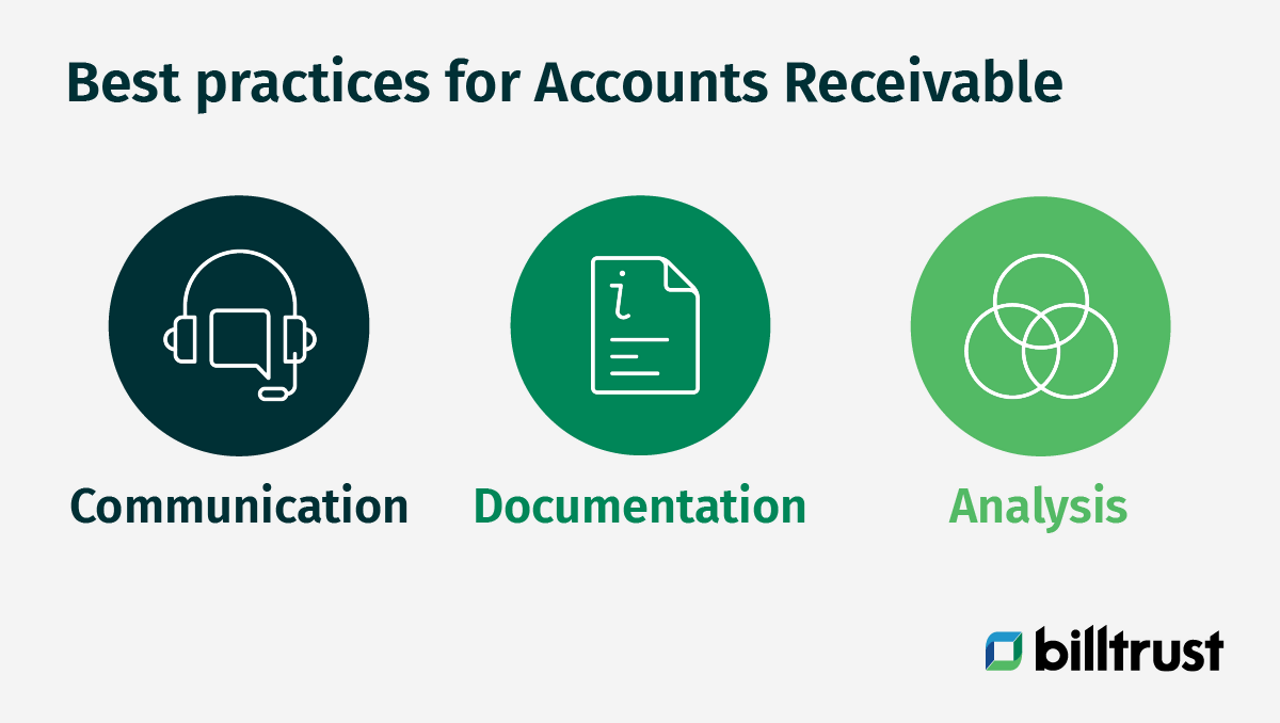Are you still managing your accounts receivable (AR) manually?
If so, you're putting your business at risk.
Accounts receivable is the lifeblood of any company. Using accounts receivable software to mitigate any risks and protect against unnecessary losses is important.
Why?
Accounts receivable automation software can reduce the risk of human error, making it easier to keep track of payments and invoices. Using AR automation can also improve your cash flow, reduce costs, improve your bottom line and much more.
Read on to discover more about leveraging accounts receivable automation for mitigating risk today.
What is accounts receivable automation?
Accounts receivable refers to the money your company has received for goods or services delivered but has not yet been paid for. Accounts receivable (AR) automation leverages technology to streamline and automate key business processes related to accounts receivable or your customers' money owed to your company.
Typically, AR automation software involves using various software tools and platforms. These help to manage tasks related to accounts receivable. For instance, everything from invoicing and collections to reporting and forecasting. Some common examples of accounts receivable automation tools include:
- Account receivable management software
- Revenue and data analytics software
- Billing solutions
What’s the significant advantage of accounts receivable automation?
Your organization can significantly reduce the time and resources required to keep your accounts in good standing by automating critical accounts receivable tasks. For example, data entry, data validation and accounting reconciliation. Additionally, automated systems often come with powerful features. These include tracking customer activity or analyzing financial performance over time, making them invaluable assets for businesses that strive to stay competitive in today's economy.
The bottom line?
Accounts receivable automation software is a powerful tool for businesses of all sizes. At its core, accounts receivable (AR) automation involves using software and other advanced technologies to streamline the invoice and payment processing process. Whether you are looking to save time or grow your business, accounts receivable automation is an essential tool worth exploring. It can save your company time, money and resources while improving efficiency across your entire accounts receivable operations.

How do you monitor accounts receivable?
Any business that deals with customers regularly will need to establish a system for managing accounts receivable. This process typically involves keeping track of invoices, payments and outstanding balances.
Monitoring accounts receivable is a crucial part of cash flow management. Why? Because it ensures that your company has the funds necessary to meet its financial obligations.
There are a few different ways to monitor accounts receivable. The method that you choose will likely depend on the size and complexity of your business:
- For smaller and more complex businesses alike, consider specialized accounts receivable automation software. It will free you up to focus on the aspects of your business that require more attention.
- Send invoices as soon as the goods or services are delivered. This will ensure that your customers know how much they owe and when payment is due.
- You can also set up a system whereby customers are automatically billed monthly. This can be done using software such as Billtrust’s automatic invoicing.
- Finally, contact customers who have not yet paid their invoices to remind them of the outstanding balance and follow up with collections when necessary.
Whichever method you choose, it’s vital to ensure that all relevant information is accurately recorded and updated regularly. By keeping careful track of accounts receivable, you can help to ensure that your business remains healthy and solvent.
What are the risks of accounts receivable?
Accounts receivable can be a real risk for businesses of all sizes and industries.
- Perhaps the most obvious risk is not being paid in full by customers. This can result from bad credit, inaccurate debtor histories or changing market conditions that make it harder for customers to pay their bills.
- Another common risk for accounts receivable is fraud. This can occur when someone with inside knowledge gains unauthorized access to financial records and uses them for personal gain.
- If your company cannot keep up with its accounts receivable, you may face serious financial consequences. For instance, late fees, declined credit lines and blacklisting by suppliers.
- Additionally, customers who cannot quickly pay their bills may become increasingly frustrated and eventually seek out alternative providers. Therefore, you must take proactive measures to effectively manage this aspect of your business and avoid any risk associated with accounts receivables.
Download the ultimate guide to digital accounts receivable

How do you manage risk in receivables?
Managing risk in receivables is a crucial part of any business. But how do you mitigaterisks in this area?
When it comes to managing accounts receivable, there are several crucial steps to help you mitigate risks:
- First and foremost, it is essential to make sure that you have good relationships with your customers so that they are willing to work with you when issues do arise. This can involve taking proactive steps to build trust, such as establishing clear lines of communication and consistently delivering high-quality products or services.
- Additionally, you should always be aware of any emerging trends in the field that could impact your customers' ability to pay. This might include changes in economic conditions, legislation or emerging technologies.
- One vital strategy is setting clear payment terms and consistently collecting on your invoices. In addition, it's essential to outline your policy for late payments and hold your customers accountable for adhering to these terms.
- You can take preventative action by regularly auditing your accounts receivable process and looking for ways to reduce any opportunities for error or fraud. Whether implementing more robust accounting software or hiring an experienced bookkeeper, taking proactive steps can help optimize and protect your receivables process.
- Finally, it is essential to stay on top of your company's financial health to identify any potentially problematic accounts before they become a significant issue. Through careful management of these and other aspects of receivables risks, you can help ensure the success of your business for years to come.
Ultimately?
Mitigating risk in this area requires constant vigilance, but the right approach can help ensure financial security and stability for your business. By taking these proactive steps, your business can reduce the risks of account receivables and ensure long-term success in an increasingly competitive marketplace.
What is the importance of accounts receivable management?
Accounts receivable management is the process of tracking and collecting payments from customers. This is vital because it allows your business to keep track of and control cash flow, ensures that your customers are paying on time, and helps your business manage its cash flow.

Optimized credit
Accounts receivable management is crucial for any business that extends credit to its customers. By carefully monitoring invoices and payments, your business can ensure that it receives the total amount owed promptly, which keeps your credit in good standing.
Increased cash flow
Good credit, in turn, helps your business maintain a strong cash flow, which is essential for keeping the company operating smoothly. A paperless invoicing system can help you keep track of your invoices and payments, so you can see at a glance which customers have outstanding balances. This allows you to take action quickly to collect any unpaid amounts.
Diminished bad debt and enhanced profitability
Accounts receivable (AR) management can also help to reduce bad debt expenses (doubtful accounts) and improve profitability. By keeping track of invoices and payments, you can consistently identify late customers in paying their bills. You can then take steps to either collect the amounts owed to the company or cut off credit to these customers.
Improved customer relationships
Accounts receivable management can help businesses improve their customer service and relationships by working with customers to set up a payment plan or arrange for automatic payments. This can help to foster goodwill and build loyalty among your customer base.
Mitigated late payments
Keeping track of customer payments allows you to identify late-paying customers and take steps to improve their payment habits. This can include sending reminder notices or phone calls and charging late fees or interest.

Final thoughts on mitigating risk with accounts receivable automation software
Accounts receivable automation software can help mitigate risk for your business. By automating the process, you can reduce the chances of human error and improve efficiency by better understanding your company’s financial health at any given time. If you’re looking for a way to improve your accounts receivable process and mitigate risk, consider implementing Billtrust’s accounts receivable automation solution.
Ready to learn more about taking your accounts receivable to the next level?
Talk with an expert today to discover how we can help you maximize your accounts receivable returns and minimize your risks.

